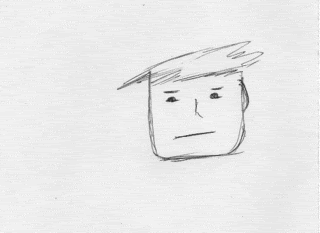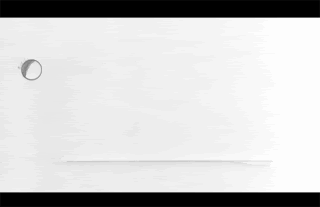You know what is the best important in a production, the cast and crew. Without them, then we don't have any entertainment or a production. In this blog, I will discuss about the importance of having cast and crews in a production. In my previous blog I have said about the concept of the production and the meaning.
Let's begin with Cast. How important it is of having a production with cast members. They are the ones who are entertain people on TV, on stage, or anywhere. What is the meaning of it? Well in the dictionary I found, specifically in Encarta Dictionary. The cast are the select participants for performance: to choose somebody for a particular role in a drama, dance, or other performance, or choose people for all the roles in a production. What are their roles? That is an easy question (NOT!). Actually, the role of the cast are the ones who participate of a certain roles like in drama, host, dance, or other performance. I'm not repeating what the dictionary said.
The cast are the actors who perform in the motion picture. A cast member is someone who performs in a motion picture. (Wikipedia.org) I'm keeping source all the time to prevent mistakes.
Now the Crew. Crew have 2 different meaning. One is, Stage crew. A stage crew or stagehand is a person who works backstage or behind the scenes in theatres, film, television, or location performance. Their duties include setting up the scenery, lights, sound, props, rigging, and special effects for a production. And the other one is, Film Crew. I think this is the most reliable meaning since we focus on production. A film crew is a group of people hired by a film company for the purpose of producing a film or motion picture. Crew are distinguished from cast, the actors who appear in front of the camera or provide voices for characters in the film. Crew are also separate from producers, those who own a portion of either the film company or the film's intellectual property rights. A film crew is divided into different departments, each of which specializes in a specific aspect of the production. (Wikipedia.org)
In casting and crewing, there are lot of "jobs"... Ok I'll make it clearer. There are lot of different roles. I found this article in Wikipedia. Lets start of with the production crew in filmmaking.
We have:
* A film producer, who creates the conditions for making movies.
* A production manager, who supervises the physical aspects of the production (not the creative aspects) including personnel, technology, budget, and scheduling.
* A unit manager, who fulfills the same role as the production manager but for secondary "unit" shooting. In some functional structures, the unit manager subsumes the role of the Transport Coordinator.
* A Production Coordinator, who is the information nexus of the production, responsible for organizing all the logistics from hiring crew, renting equipment, and booking talent. The PC is an integral part of film production.
* A Post-production supervisor.
* A director, who is responsible for overseeing the creative aspects of a film, including controlling the content and flow of the film's plot, directing the performances of actors, organizing and selecting the locations in which the film will be shot, and managing technical details such as the positioning of cameras, the use of lighting, and the timing and content of the film's soundtrack.
* A first assistant director (1st AD), who assists the production manager and director.
* A second assistant director (2nd AD), who is the chief assistant of the 1st AD and helps carry out those tasks delegated to the 1st AD.
* A production assistant, who assists the first assistant director with set operations. Production assistants, almost always referred to as PAs, also assist in the production office with general tasks.
* A Script Supervisor, who is also known as the "continuity person", the script supervisor keeps track of what parts of the script have been filmed and makes notes of any deviations between what was actually filmed and what appeared in the script.
* A production accountant, who assists the production manager and line producer in keeping track of the film's budget. The production accountant, together with his or her various assistants, are often considered to be a separate department.
* A location manager, who researches, locates, secures and coordinates the filming locations. He/she creates a location breakdown, identifying the precise locations needed and works hand-in-hand with the director and the production designer.
* A publicist, who handles the publicity of a film. He promotes the film by issuing press releases and overseeing advertisements.
* And a Casting Director.
Now lets go to the Art Department. Have you watch StarWars, or a music video like Clumsy by Fergie? Do you who made it? No? Well, the answer are the Art Department. The Art Department in a major feature film can often number hundreds of people. Usually it is considered to include several sub-departments: the art department proper, with its art director, set designers and draughtsmen; sets, under the set decorator; props, under the propsmaster; construction, headed by the construction coordinator; scenic, headed by the key scenic artist; and special effects.
So we have:
* A production designer, who is responsible for creating the physical, visual appearance of the film - settings, costumes, properties, character makeup, all taken as a unit. The production designer works closely with the director and the cinematographer to achieve the 'look' of the film.
* A art director, who reports to the production designer, and more directly oversees artists and craftspeople, such as the set designer and set decorator, who carry out the production design.
* A set designer, who is the draftsman, often an architect, who realizes the structures or interior spaces called for by the production designer.
* An Assistant Art Director, who carry out the instructions of the art director.
* A set decorator, who is in charge of the decorating of a film set, which includes the furnishings and all the other objects that will be seen in the film.
* A buyer is the number two person in the set department below the set decorator.
* A lead man, who is the foreman of the sets crew, often referred to as the “swing gang.”
* A set dressers apply and remove the "dressing," i.e., furniture, drapery, carpets—everything one would find in a location, even doorknobs and wall sockets.
* A property master, more commonly known as the props master, is in charge of finding and managing all the props that appear in the film.
* A props builder, as the name implies, builds the props that are used for the film. Props builders are often technicians skilled in construction, plastics casting, machining, and electronics.
* A armourer, who is a specialized props technician who deals with firearms. In most jurisdictions this requires specials training and licenses.
* A construction coordinator who oversees the construction of all the sets.
* A head carpenter, who is the foreman of a "gang" of carpenters and laborers.
* A key scenic artist, who is responsible for the surface treatments of the sets.
* And a greensman, who is a specialised set dresser dealing with the artistic arrangement or landscape design of plant material, sometimes real and sometimes artificial.
I'm going to ignore the wardrobe and hair and make-up, so lets go to the Camera.
We have:
* A DOP or director of photography, who is the chief of the camera and lighting crew of the film.
* A cinematographer, who has been a point of contention for some time now. It is usually synonymous with "director of photography," though some professionals insist that it only applies when the director of photography and camera operator are the same person.
* A camera operator, who uses the camera at the direction of the cinematographer, director of photography, or the film director to capture the scenes on film. Generally, a cinematographer or director of photography does not operate the camera, but sometimes these jobs may be combined.
* A first assistant camera (1st AC) who is responsible for keeping the camera in focus as it is shooting.
* A second assistant camera (2nd AC), who operates the clapperboard at the beginning of each take and loads the raw film stock into the camera magazines between takes, if there is no additional specifically desiginated film loader.
* A loader, who is the designated film loader.
* A Camera Production Assistant (camera intern). Usually a volunteer or trainee in the camera department, the camera PA assists the crew with menial details while learning the trade of the camera assistant, operator or cinematographer.
* A Digital Imaging Technician ("DIT"). On digital photography productions the digital imaging technician is responsible for the coordination of the internal workings of the digital camera.
* A Steadicam operator, who is someone who is skilled at operating a Steadicam rig (the genericized trademark for a camera stabilization rig).
* And A Motion Control Technician/Operator. This technician operates a motion control rig, which is essentially a 'camera robot' that is able to consistently repeat camera moves for special effects use. Motion control rigs are typically rented with an experienced operator.
And a lot more like:
* The film editor is the person who assembles the various shots into a coherent film, with the help of the director.
* The production sound mixer is head of the sound department on set, responsible for recording all sound during filming. This involves the choice and deployment of microphones, operation of a sound recording device, and sometimes the mixing of audio signals in real time.
* The visual effects supervisor is in charge of the visual effects department. Visual effects refer to post-production alterations to the film's images. They are not to be confused with special effects, which are done during production (on set).
* A compositor is a visual effects artist responsible for compositing images from different sources such as video, film, computer generated 3-D imagery, 2-D animations, matte paintings, photographs, and text.
* Sound Editor is responsible for assembling and editing all the sound effects in the soundtrack.
* The music supervisor, or "music director", works with composer, mixers and editors to create and integrate the film's music. In Hollywood, a music supervisor's primary responsibility is to act as liaison between the film production and the recording industry, negotiating the use rights for all source music used in a film.
* The composer is responsible for writing the musical score for a film.
* The sound designer, or "supervising sound editor", is in charge of the post-production sound of a movie. Sometimes this may involve great creative license, and other times it may simply mean working with the director and editor to balance the sound to their liking.
* Dialogue Editor is responsible for assembling and editing all the dialog in the soundtrack.
Wow, There a lot of list of cast and crew. It's so unbelievable. I don't have much to say anymore.












































